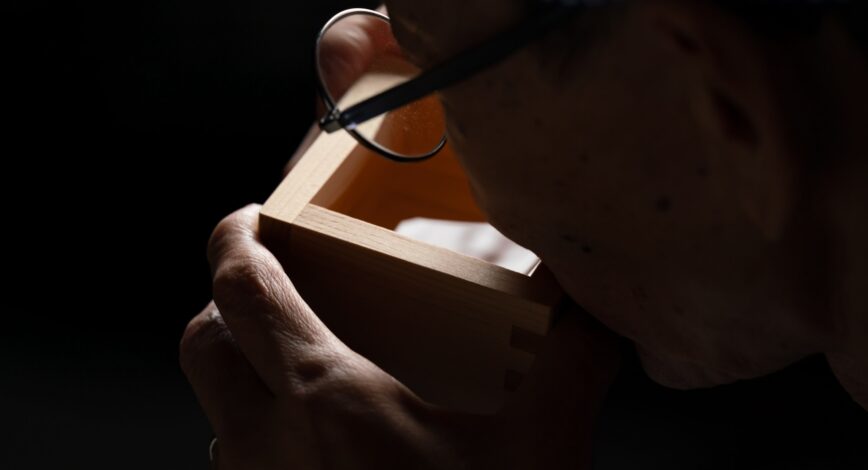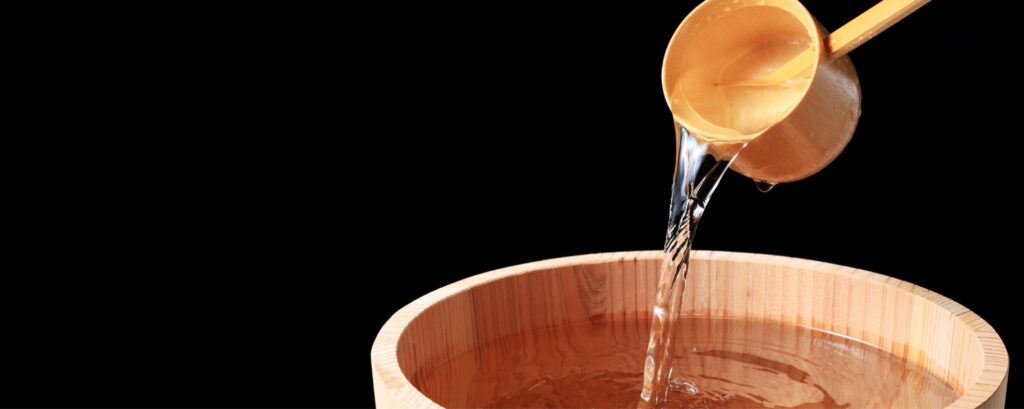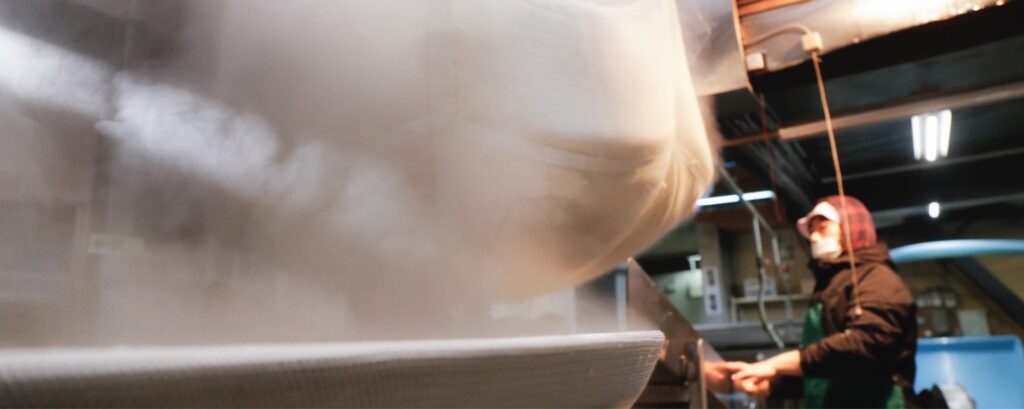
Sake
Kimoto – Traditional Sake making method
Today’s pick-up is Yamaoroshi. Have you seen Kimoto or Kimoto-zukuri mentioned on the labels of Sake bottles? Simply speaking, Kimoto is a traditional production method which utilizes the natural bacteria. To make Sake in the Kimoto method, a process called Yamaoroshi (mashing) is necessary. Let us check what exactly Yamaoroshi stands for and what unique characteristics Kimoto-method Sake provides.
Contents
What is Kimoto method?

As you might be aware by now, ingredients for Sake is simply rice, rice koji and water. The base of Sake is called Shubo, which is made from a mixture of steamed rice, koji, kobo yeast and lactic acid. The main role of Shubo is to multiply Kobo yeast which induces alcohol fermentation.
In order to take an advantage of characteristic of Kobo and bacteria, it is important to keep the Shubo acidic creating an ideal environment for fermentation. Why? It is because Kobo yeast used for Sake production is resistant to acidity while unnecessary microorganisms and bacteria cannot remain active under a certain acidity. Keeping it acidic therefore prevents the work of bacteria, while encouraging the fermentation process.
Here, lactic acid is a critical player to keep Shubo acidic both in Kimoto and non-Kimoto method. What makes a difference is how lactic acid is added to the Shubo. Sokujo-kei Shubo is made by adding artificially-produced lactic acid. Shubo made from lactic acid which naturally inhibits in the Sake barrel is called Kimoto-kei Shubo. Kimoto-kei Shubo making process requires more efforts and longer time frame than that of Sokujo-kei Shubo as its counterpart is natural bacteria. Needless to say, Kimoto-method requires much more work of artisants.
Yamaoroshi

Kimoto-kei Shubo can be divided into two sub-categories, Kimoto-zukuri and Yamahai-zukuri. Kimoto-zukuri Shubo is a type of Shubo made through a process called Yamaoroshi. Yamaoroshi is a name of process to grind steamed rice, koji and mix with water in a shallow bucket to make a porridge-textured liquid with a huge stick. As is easily imagined, the mashing process requires a tremendous amount of labour and long process time.
It was believed that natural lactic acid can easily be absorbed into Shubo through the process of Yamaoroshi, and this process would encourage the multiplication of lactic acid. Thus, Yamaoroshi had long been used at a number of breweries until the appearance of Sokujo-kei Shubo in 1910.
Yamahai-zukuri also encourages the cultivation of natural lactic acid as Kimoto-zukuri, but it omits the process of Yamaoroshi mashing. “Yamahai (山廃)” in Japanese stands for an omittance / abolition of Yamaoroshi. The development of high-quality Sake rice, improved polishing technologies, discovery of Koji-yeast that has powerful efficacies in changing starch into glucose are believed to be contributing factors for the abolition of Yamaoroshi process. Lately, the majority of Shubo making is done in Sokujo-kei mehod (90%), followed by Yamahai-method (8%) and, Kimoto-method (2%).
Flavours of Kimoto-zukuri

Sake made in Kimoto-method is said to have richer and deeper tastes compared to Sake made in Sokujo-kei method. In addition, Kobo brought up in Kimoto-method are active and long-lasting. As alcohol fermentation is more actively performed, Sake made in Kimoto-method comes to have a sharp dry tastes. Descriptions used for Sake sometimes vary, but Kimoto Sake is largely expressed in such words as powerful, rich, complex and deep. Due to its time and labour consuming disadvantages, supply of Kimoto-method Sake in market is in a decrease. Good news is that there are some cases where breweries go back to Kimoto method as the unique flavours do not cease to gain attention from consumers. It tastes even better as the heat broadens the width of flavours, providing a supreme experience. Why don’t you try hot Kimoto Sake with Kan temperature and warm yourself up?
To sum up, Kimoto-method is a traditional way of Sake production which requires a lot of human labour and long production time. It cannot be mass-produced, nor becomes largely available. However, there are core fans of Kimoto-method Sake to retain its existence. If you have not tried Kimoto Sake yet, try a sip to sense its powerful rich characters. I hope you can taste the difference even more clearly after reading this note!
ikki is looking for a partner who can post your knowledge or activity on our media. If you are interested please contact us through CONTACT page.








